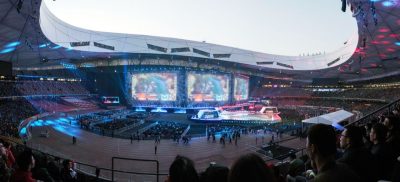In recent years, the gaming industry has witnessed a technological revolution that has raised the bar for visual fidelity, performance, and interactivity. At the forefront of this evolution is Capcom’s Reach for the Moon Engine, commonly referred to as the RE Engine. Known for powering some of the most acclaimed titles in recent memory, this engine has quickly become synonymous with high-quality gaming experiences. As the industry continues to evolve, the RE Engine stands out as a key player in defining the future of game development.
Origins and Evolution
The RE Engine was developed by Capcom with a specific vision in mind: to create a flexible, high-performance tool that could support a diverse range of games while providing cutting-edge visuals. The engine first debuted with Resident Evil 7: Biohazard in 2017, and since then, it has been used in several blockbuster titles, including Resident Evil 2 Remake, Resident Evil 3 Remake, Devil May Cry 5, and Resident Evil Village. Each of these games has been praised for its stunning graphics, intricate detail, and seamless gameplay, showcasing the engine’s capabilities.
Key Features of the RE Engine
-
Photorealistic Graphics: The RE Engine is designed to deliver photorealistic graphics that enhance the immersion of any gaming experience. It utilizes advanced rendering techniques, such as global illumination, realistic shading, and high-dynamic-range (HDR) imaging, to create lifelike environments and characters. This level of detail allows developers to build worlds that feel both believable and engaging.
-
Cross-Platform Flexibility: One of the standout features of the RE Engine is its cross-platform compatibility. Initially developed for PC and current-generation consoles, the engine has proven its adaptability by running efficiently on older hardware and newer platforms, such as PlayStation 5 and Xbox Series X/S. This flexibility allows developers to reach a broader audience and ensures that games maintain high-quality performance across various systems.
-
Efficient Performance: The RE Engine is optimized for performance, allowing for smoother gameplay experiences even in graphically demanding titles. This efficiency is achieved through intelligent resource management, real-time rendering optimizations, and scalable asset streaming, ensuring that players enjoy fluid gameplay without compromising on visual fidelity.
-
Versatile Game Design: The RE Engine’s design philosophy prioritizes versatility, making it suitable for a wide range of game genres. Whether it’s the horror atmosphere of the Resident Evil series, the action-packed sequences of Devil May Cry 5, or the adventurous exploration of Monster Hunter Rise, the engine can adapt to the specific needs of each game, providing developers with the tools necessary to realize their creative visions.
-
Realistic Physics and Animation: Physics and animation are crucial to delivering an authentic gaming experience. The RE Engine incorporates advanced physics simulations and motion capture technology to create realistic animations and interactions within the game world. This feature allows for dynamic character movements and environmental interactions, further immersing players in the game.
-
Advanced AI Capabilities: AI has become an integral part of modern game design, and the RE Engine offers sophisticated AI tools to enhance gameplay mechanics. These capabilities allow developers to create intelligent NPCs (non-player characters) that react dynamically to the player’s actions, providing a more challenging and engaging experience.
How the RE Engine is Shaping the Future of Game Development
Immersive Virtual Reality Experiences
The RE Engine’s emphasis on photorealism and high performance makes it an ideal candidate for virtual reality (VR) experiences. Capcom has already experimented with VR through Resident Evil 7, which provided one of the most terrifying and immersive VR experiences to date. As VR technology continues to advance, the RE Engine’s capabilities will allow developers to push the boundaries of what is possible in virtual reality, offering players even more immersive and realistic gaming experiences.
Integration with Next-Gen Technologies
The future of gaming is being shaped by emerging technologies such as ray tracing, machine learning, and real-time ray-traced reflections. The RE Engine is well-positioned to integrate these technologies, thanks to its flexible architecture and commitment to staying at the cutting edge of graphical and computational advancements. As more games begin to leverage these technologies, players can expect even more visually stunning and complex gaming worlds.
Enabling Realistic Storytelling
The demand for narrative-driven games with emotionally resonant stories is on the rise. The RE Engine’s ability to create lifelike characters and environments enhances storytelling by making in-game interactions and narratives more believable. Games like Resident Evil Village have demonstrated the engine’s capacity to deliver emotionally charged moments, thanks to its sophisticated character models and animation systems. This storytelling potential is expected to inspire developers to craft deeper and more immersive narratives.
Streamlined Development Process
Game development is a complex and resource-intensive process, often requiring significant time and effort. The RE Engine streamlines this process by providing developers with robust tools and workflows that enhance productivity. Features like real-time editing, visual scripting, and modular asset management allow teams to iterate quickly and efficiently, reducing development time and enabling studios to focus on creativity and innovation.
Expanding Into Diverse Genres
While the RE Engine has primarily been associated with horror and action titles, its adaptability opens the door to exploring diverse game genres. The engine’s technical prowess and versatility make it suitable for open-world games, RPGs, and even competitive multiplayer experiences. This expansion into new genres will likely result in a wider variety of games, showcasing the engine’s capabilities and appealing to a broader audience.
Challenges and Future Prospects
Despite its many strengths, the RE Engine faces several challenges as it continues to evolve. Keeping up with rapidly advancing hardware, optimizing performance for various platforms, and meeting the ever-increasing expectations of players are ongoing concerns. However, Capcom’s commitment to innovation and the engine’s track record of success suggest that it will continue to rise to these challenges.
In the future, we can expect the RE Engine to become a staple in the development toolkit of many studios. Its ability to deliver breathtaking visuals, seamless gameplay, and versatile design options makes it a prime choice for developers looking to create the next generation of gaming experiences. As technology continues to advance, the RE Engine will undoubtedly play a pivotal role in shaping the landscape of the gaming industry.
Conclusion
The Reach for the Moon Engine has already proven itself as a formidable force in the gaming industry, powering some of the most visually stunning and technically advanced titles of recent years. As we look toward the future, the RE Engine’s commitment to innovation, performance, and versatility positions it as a key player in defining the next era of game development. With its ability to push the boundaries of what’s possible in gaming, the RE Engine is poised to continue influencing the industry for years to come, making it an exciting time for developers and players alike.
References
- Capcom’s RE Engine: An In-Depth Look at the Technology Behind Resident Evil 7 – Gamasutra
- The Making of Resident Evil 2: Capcom’s RE Engine – IGN
- Capcom’s RE Engine and the Evolution of Game Development – VentureBeat
These references offer detailed insights into the RE Engine’s technology and the games that showcase its capabilities.




